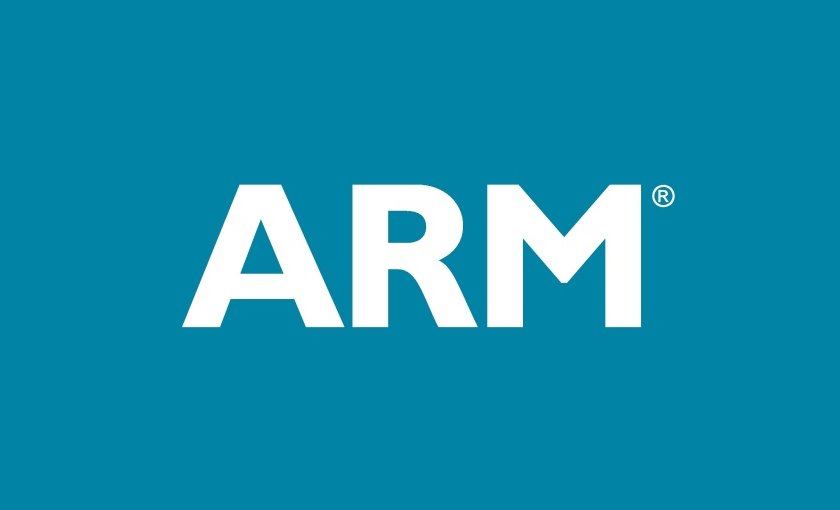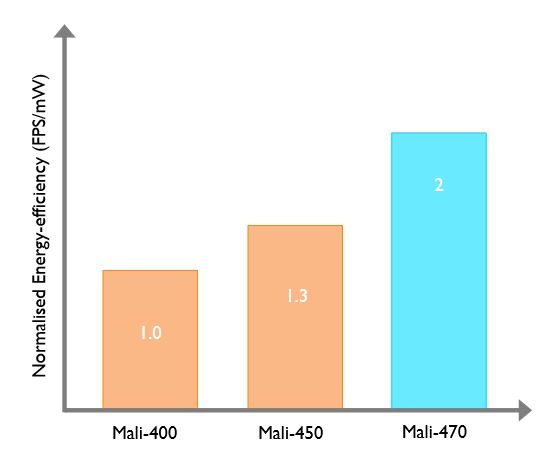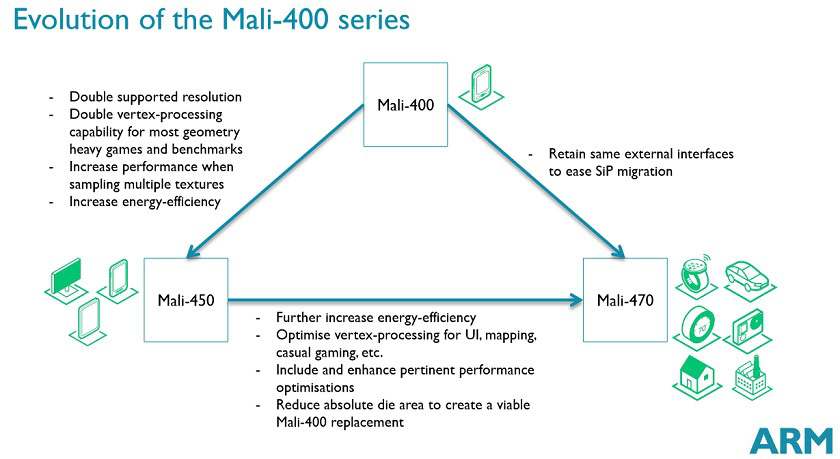Affiliate links on Android Authority may earn us a commission. Learn more.
ARM announces Mali-470 GPU, halves power consumption of the Mali-400

Today, ARM has announced its new Mali-470 GPU, which is designed primarily for the wearables and Internet-of-Things markets. The GPU is the successor to the hugely popular Mali-400 GPU found powering a range of entry-level smartphones and smartwatches.
The major advancement with the Mali-470 is that is consumes roughly half the power of the Mali-400, making it an even better fit for scenarios with limited battery capacities and particularly strict thermal limits, such as wearables. Performance remains consistent with the Mali-400, meaning that these extra energy savings are not coming at the expense of raw grunt.

Just like the Mali-400, the Mali-470 scales up from one to four pixel processors for additional performance. The Mali 450 chip in the range can be scaled up to eight cores, if a product developer need to display content at a higher resolution.
If the Mali-400 range sounds familiar to smartphone users, the Utgard architecture originally powered older Android handsets and can be found in mid-range SoCs such as the octa-core MT6592. It turns out that this graphics technology is pretty well suited to the lower power requirements of wearables. Midgard is ARM’s latest architecture for higher performance Mali GPUs, such as its T-760, found in high-end smartphones like the Galaxy S6, and the recently announced T-880.
As a result of the redesign, the Mali-470 can squeeze into a slightly smaller die area size than the Mali-400 as well, depending on how silicon partners decide to design the chip. ARM envisions the new GPU paired up with its efficient Cortex-A7 or A53 CPU designs for a low-power SoC.

In terms of target products, the Mali-470 is designed for a range of relatively low power applications, including wearables, home electronics and automotive that make use of a graphics user interface. To support this, the Mali-470 works with OpenGL ES 2.0 and 1.1, the minimum requirement for Android Wear. While OpenGL ES 3.0 may be newer, the additional features aren’t worth the extra power requirements that they would place on the GPU’s hardware design, especially as the Mali-470 is aimed primarily for use in GUI oriented situations. OpenGL ES 2.0 is already widely used in these type of products, so swapping a chip into designs should be relatively straight forward.
As with all chip releases, there is some time to wait until the Mali-470 makes it way into consumer products. ARM expects that the first silicon partners could have SoCs using the new GPU ready by the end of 2016, which means that products could begin showing up sometime in the first half of 2017.